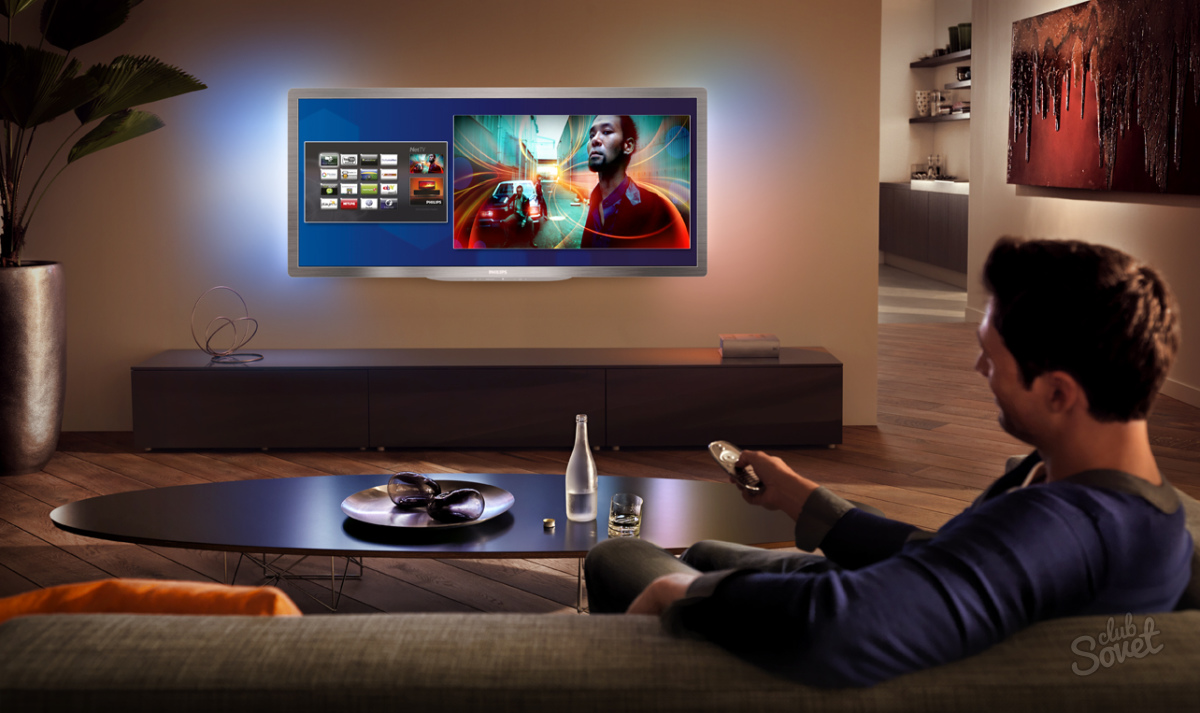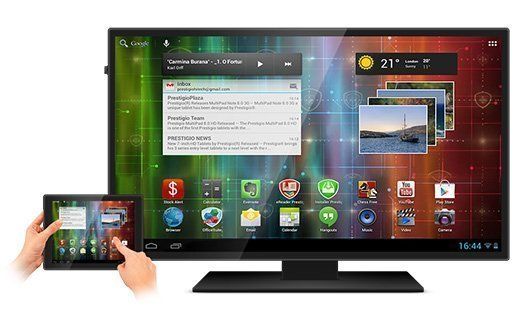Distance to TV depending on diagonal
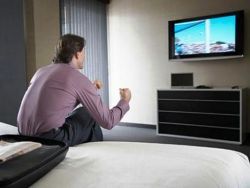 In order not to damage your eyes, you need to know what the distance from the TV to the person should be. After all, if you neglect the recommendations, you can ruin your vision prematurely.
In order not to damage your eyes, you need to know what the distance from the TV to the person should be. After all, if you neglect the recommendations, you can ruin your vision prematurely.
The content of the article
From what distance to watch 4K TV?
The value of this indicator depends on two main factors: the diagonal of the TV and the screen resolution. 4K puts 4 times more pixels on the screen than regular HD. This allows you to notice the smallest details at a closer distance. At the same time, it should be such that the feeling of comfort from viewing is not lost. In other words, you need to find both an ideal and comfortable location for watching TV.
Experts for 4k devices recommend a distance based on 1.2 -1.7 diagonal sizes. It is easy to calculate that for a 55-inch TV it will be 1.68 - 2.38 m. However, to take full advantage of 4K, the value should be less than 1.2 m. This is an inconvenient and unsafe distance for the user from a large bright screen . A more correct distance for watching a 4K TV with such a diagonal would be 1.5 - 2.2 m from the sofa or bed, which makes it possible to experience the comfort and advantageous capabilities of a higher resolution.
Attention! To appreciate all the advantages of 4K at a distance of 2.5 m to the screen, the diagonal must be 80 inches.
For such a screen you need a large room. In practice, most potential viewers cannot decide where to install 4K. In addition, many Russian television programs are broadcast in 720p or 1080p format, which do not allow you to take advantage of the high definition of 4K. This also applies to Internet content and streaming television.
Reference! Streaming television is a streaming service in which content is broadcast in real time, depending on the viewer’s Internet speed.
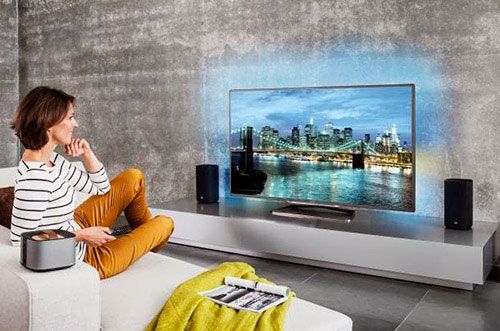
Recommendations for distance from person to TV
Modern screens are constantly getting larger and becoming very thin. For a 65-inch or 1.65 m TV, you have to work hard to find the right place. It can be hung on the wall or mounted on a bracket. The main thing is that watching TV does not cause a feeling of fatigue from the load on the entire body as a whole.
According to the advice of ophthalmologists, the TV screen should be at the same level as the viewer’s eyes. The permissible deviation in any direction is no more than 10-15 cm. The guide is determined for a person in a sitting position.
Important! Watching TV while lying down significantly increases eye strain.
A bad option is considered to be the position of the screen “under the ceiling”, which is often found in modern interiors. Viewing with your head up causes tension in your neck muscles, which can cause pinched nerve endings. The distance from the floor should be more than 70 cm, so as not to tilt your neck, on the contrary, down, which is also not very convenient for long-term viewing.
Modern LCD and LED TVs are considered safe for the eyes. However, discomfort occurs both when viewed closely and from a distance. In the latter case, vision strain occurs and myopia develops.
The viewing angle for completeness of what is seen, according to different standards, should be 30-60 degrees. For example, according to THX standards, an angle of 40 degrees is considered the best for viewing. This is provided by a 60-inch diagonal screen at a distance of 2.74 m from it. According to SMPTE standards, an angle of at least 30 degrees is considered best, with the same distance of 2.74 m the diagonal length increases to 68 inches.
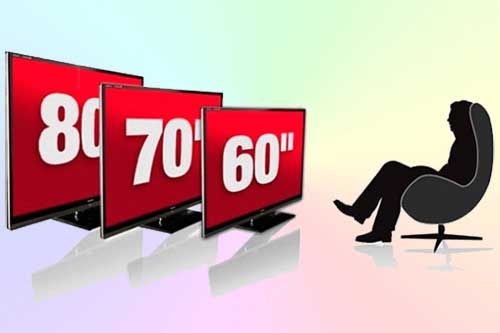
How to calculate distance depending on diagonal
There is a rule according to which the distance between the eyes and the screen should be equal to the size of the diagonal of the screen, increased by 3-4 times the size. For example, with a diagonal of 65 inches or 1.65 m, the required value will be 4.95 - 6.6 m. As the distance from the screen increases, the required diagonal length that it must have increases.
Reference! Plasma and LCD flat screens do not cause eye fatigue from glare, so the distance to the screen can be reduced to 1.7 times the diagonal length.
You can select the distance depending on the diagonal and resolution using one of the many tables offering your own option, obtained by mathematical calculation taking into account the viewing angle:
| Diagonal length | Minimum distance to screen depending on resolution, m | |||
| inches | cm | 720r | 1080p | 4K |
| 26 | 66 | 1,55 | 1,03 | 0,5 |
| 32 | 81 | 1,9 | 1,27 | 0,63 |
| 37 | 94 | 2,2 | 1,47 | 0,72 |
| 40 | 102 | 2,38 | 1,59 | 0,8 |
| 42 | 107 | 2,5 | 1,66 | 0,83 |
| 46 | 117 | 2,74 | 1,82 | 0,9 |
| 50 | 127 | 2,97 | 1,98 | 1,0 |
| 52 | 132 | 3,09 | 2,06 | 1,03 |
| 55 | 140 | 3,27 | 2,18 | 1,09 |
| 58 | 147 | 3,45 | 2,3 | 1,15 |
| 60 | 152 | 3,56 | 2,39 | 1,1 |
| 65 | 165 | 3,86 | 2,58 | 1,3 |
| 70 | 178 | 4,17 | 2,77 | 1,4 |
In addition to tables, charts and graphs are created to help determine the optimal distance. The minimum calculated value assumes viewing in which the effect of pixelation (individual pixels) is not visible, but all image details are visible.
Existing tables of recommended distances depending on the length of the diagonal do not take into account the fact that 2-3 people can watch TV at the same time, for whom viewing from a distance of 1.5 m, even with a 60-inch screen, will be uncomfortable due to the increased viewing angle. Therefore, recommendations always face reality, which introduces its own nuances.
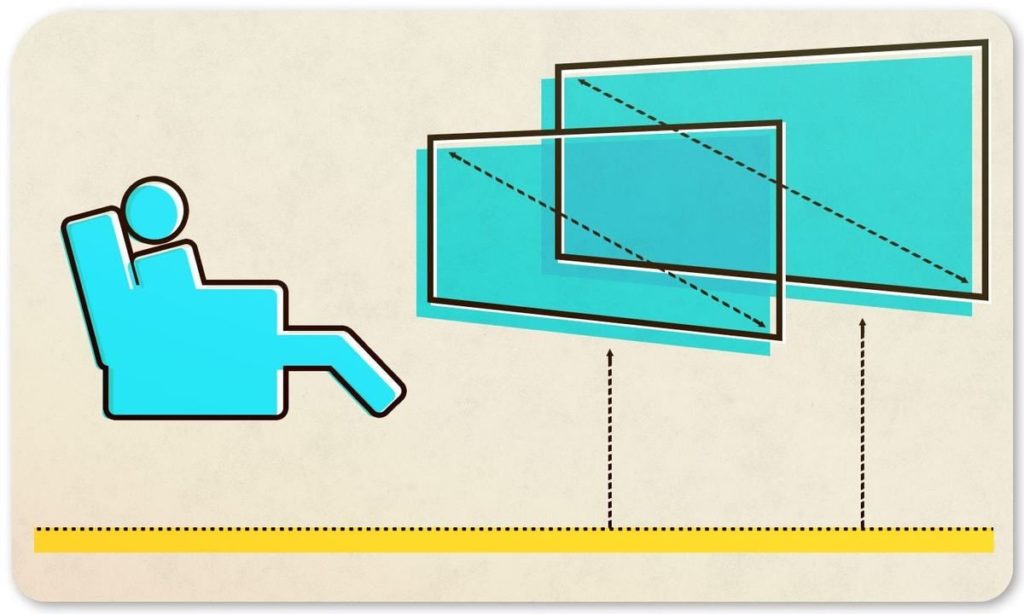
The tables help when choosing a TV and its installation depending on the size of the room. Table data can always be adjusted to suit certain viewing conditions.
Reference! To watch TV in 3D, the same calculations and tables are used. It is recommended to increase the viewing angle to 50-60 degrees.
Beyond Rule
According to this rule, when choosing the diagonal size, two factors matter: resolution and distance to the screen. The main requirement is the need to make the TV a non-dominant object in the room. It should not dominate the valid space. Therefore, the main task is to choose a TV with a diagonal of such length that the TV does not become the main object of attention for any person entering the room. Attention should not be focused specifically on the device.
According to the Beyond rule, the location of the TV can be determined in two ways.
The first suggests making a model according to the size of the TV, placing it in the planned installation location, and visually assessing whether the device is the dominant object in the room. In reality, the TV will always be larger and more voluminous than the layout, which must also be taken into account. The rule suggests seeking the opinion of the whole family when determining the location of the TV.
The second is to use the existing table of distances depending on the size of the diagonal: 17 - 1.5; 25 - 2; 32 - 2.5; 37 - 2.7; 40 - 3; 50 - 4; 55 - 4.5, where the first number is the diagonal size in inches, the second is the distance in meters. You can use the table above.




